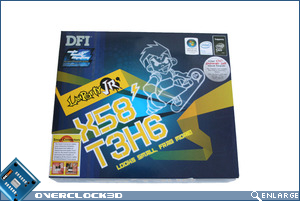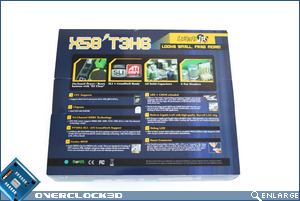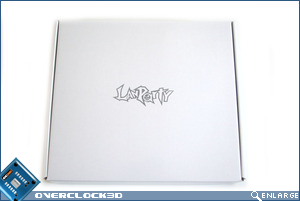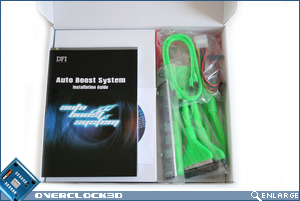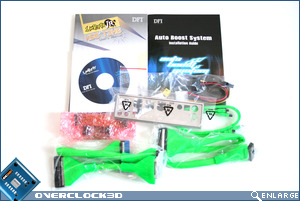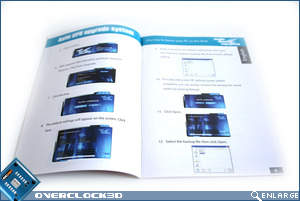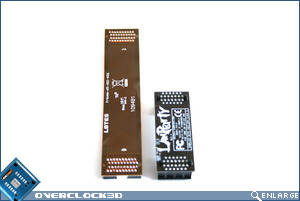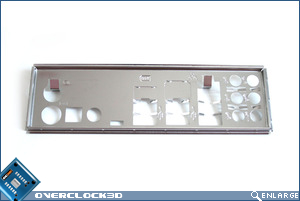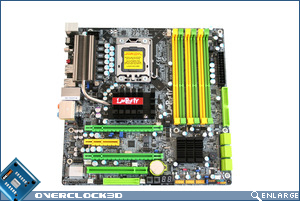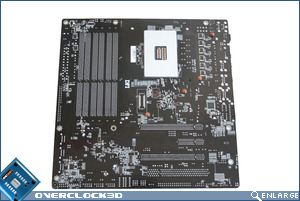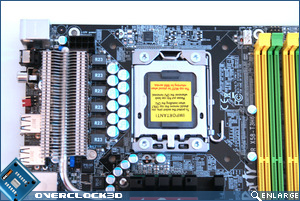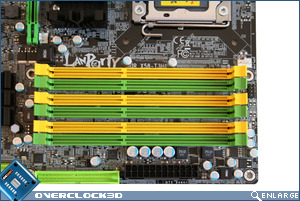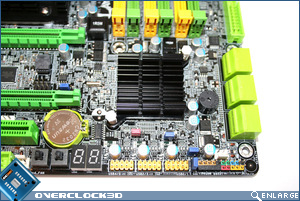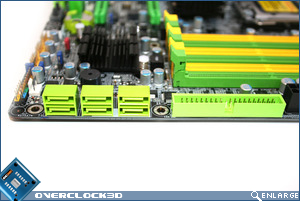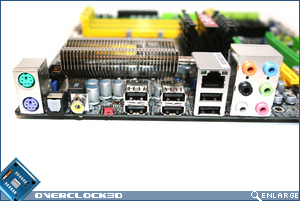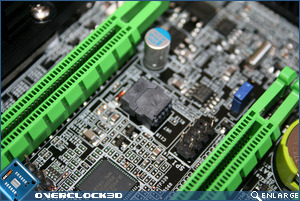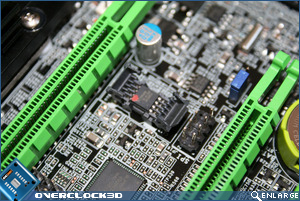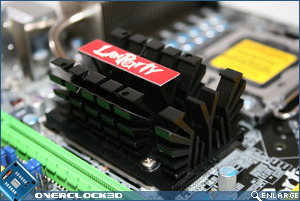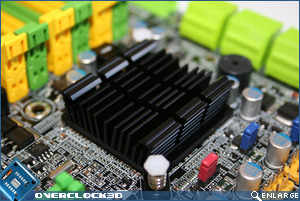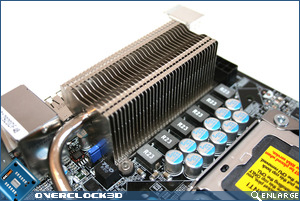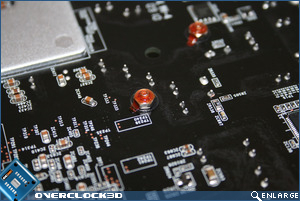DFI X58 T3H6 JR mATX Motherboard
Packaging & Appearance
Â
The front of the box is akin to the Lanparty boxes of old with a cartoon figurine taking pride of place next to the motherboard title. Apart from the obligatory Intel emblems, DFI have applied three stickers that seem to be more of an after thought than anything else. These stickers inform us that the X58 T3H6 has smart connectors, an Auto Boost System, and perhaps most interestingly, that the Intel OC power off issue is fixed and as such, tweaking the FSB or memory ratio will not power off the motherboard by itself as before. The rear of the box goes on to describe some of the finer points of the motherboard such as EZ Clear (a method of resetting the CMOS without jumpers), SLI and Crossfire capability, all solid capacitors and 6 fan headers.
Â
Â
Removing the outer sleeve we arrive at a plain white inner box which is screen printed with the Lanparty logo. Contained inside are a raft of accessories and booklets neatly separated by a cardboard layer which in turn is protecting the motherboard, itself packaged inside an anti static bag on top of a thin slice of foam for rear protection.
Â
Â
The accessory list is not the most expansive IÂ have seen with just the bare essentials included to set you on your way. Two UV Green reactive SATA data and power cables, an IDE and floppy cable, ‘Smart connectors’, a dual and triple SLI bridge along with the obligatory I/O shield and motherboard manuals are included along with a driver/utility CD. I was impressed with the Auto Boost manual which was clearly laid out with colour photographs. Why this method of printing was not adopted for the main motherboard manual I do not know but it seems DFI have missed a trick excelling in one department but sticking to the standard grey-scale scheme in the other.
Â
Â
Â
The motherboard itself is typical of DFI offerings in that it’s a black 6 layer PCB with a two tone colour scheme. Matching it’s bigger brother, the ATX T3eH8 Ultra, the T3H6 has the same lime green and yellow slots which while appealing to some may deter others who are not fond of this colour scheme. There can be no doubting though that this is one striking board. Flipping the board over we see that the mainboard should not present any difficulties installing a CPU cooler backplate so long as it is an X configuration and not a square.
Â
Â
First impressions are that the CPU socket area is cluttered but on closer examination all the power regulation comes from the I/O side of the socket, leaving the space above the socket free from heat sinks. To the left of the socket, we see that the DFI T3H6 has a six phase power design along with all solid capacitors which should lengthen the life of the motherboard.
Â
DFI have managed to cram 6 memory sockets onto the motherboard which are capable of supporting DDR3 1800(O.C.)/1600/1333/1066 MHz and upto 24GB which will give an astonishing top line of 43.2GB/s bandwidth. This is a great achievement for a motherboard of this size and an ideal solution for those looking to take full advantage of the masses of bandwidth X58 affords.
Â
Â
Inevitably because of the mATX design, some areas needed to be sacrificed and the PCI area is the place that has taken the brunt of the shrinkage. DFI have however, still managed to squeeze two 16x PCIe slots in there along with a 4x slot and a standard PCIÂ slot should you not want to take advantage of the motherboards SLIÂ and Crossfire capabilities. If SLI/Xfire with double slot cards is your bag then no other slots will be available for expansion. Below the Southbridge area, we find the EZ switches which allow the CMOSÂ to be cleared by pressing both switches in unison. In practise this worked fine but this feature wasn’t used too much because the board seemed to recover well from excessive overclocking. An LED display shows the boot progress as well as any fault codes allowing you to determine where the fault is rather than having to decipher beep codes.Three External USB headers are also in place along with the motherboard headers which DFI have thoughtfully included a set of Smart Connectors for ease of use when installing the motherboard.
Â
Â
There’s only one option for your drive controller and this is the ICH10R as there are no other controllers on board such a JMicron etc. There are however 6 SATA ports which is ample for a motherboard of this size. Amazingly, DFI also include a floppy and legacy IDE port should you still be clinging on to this technology. The I/O area is a little sparse with just 6 USB ports, a single RJ45 LAN port, 7.1 audio courtesy of 6 3.5mm jacks controlled by the Realtec ALC889 High Definition audio CODEC. In addition to the jacks are an optical S/PDIF-out port and a coaxial RCA S/PDIF-out port. Last of all, DFI again give a nod to yesteryear with PS/2 mouse and keyboard ports.
Â
Â
How many times have you flashed a motherboards BIOS for it to corrupt itself meaning the whole motherboard needs to be RMA’d at considerable cost to you? With the DFI T3H6, the BIOS chip is removable, reducing in postage costs should the worst happen. The chip is protected by a clasping mechanism but is relatively easy to release should you need to.
Â
Â
Rather than opt for a full heatpipe assembly, the NB and Mosfet coolers are separated from the Southbridge heatsink. Both the Northbridge and Southbridge coolers are aluminium which is a shame as copper is a better conductor of heat but the heatpipe connecting the Northbridge and the Mosfets is nickel plated copper ensuring heat is adequately wicked away from the most critical parts.
Â
Â
The Northbridge/Mosfet assembly is screwed down to the motherboard with retaining nuts which have some sort of glue/anti tamper material on them. I’d like to think that this glue is there to prevent the nuts from coming loose but I struggled to get the nuts free and with the threads also coated in the same gunk, re-using them would be nigh on impossible. This is very disappointing as it makes the heatsinks removal a tiresome and tricky affair which, if the screws were simply spring loaded, the whole removal procedure would be so much easier.
Â
Â
Overall a very solid, smart looking motherboard. The colour scheme is becoming a little dated but if nothing else, it is a signature scheme of DFI and for that reason alone they can be forgiven. The Smart connectors are a good idea but nothing new, much the same as the LED indicators and the on board switches but all are welcome on enthusiasts boards.
Â
Let’s see if there are any surprises in the BIOS section…Â Â



